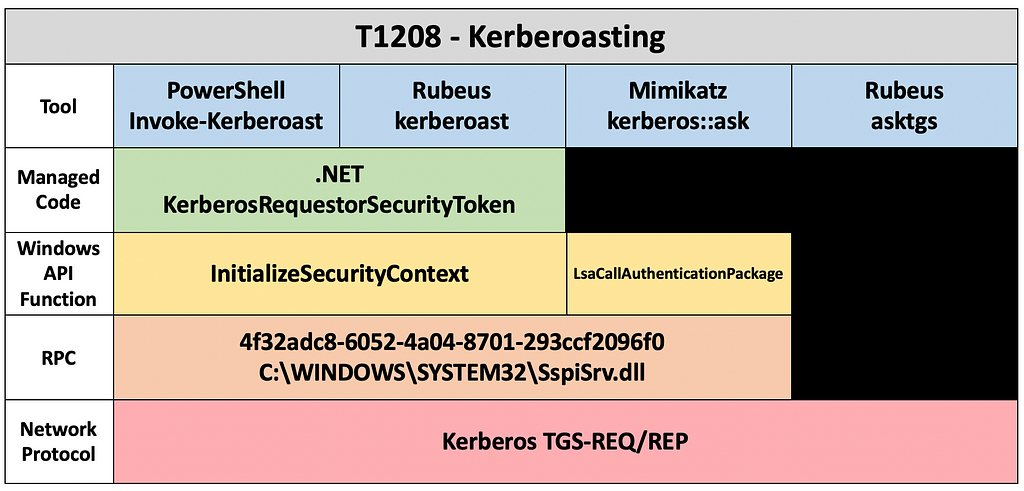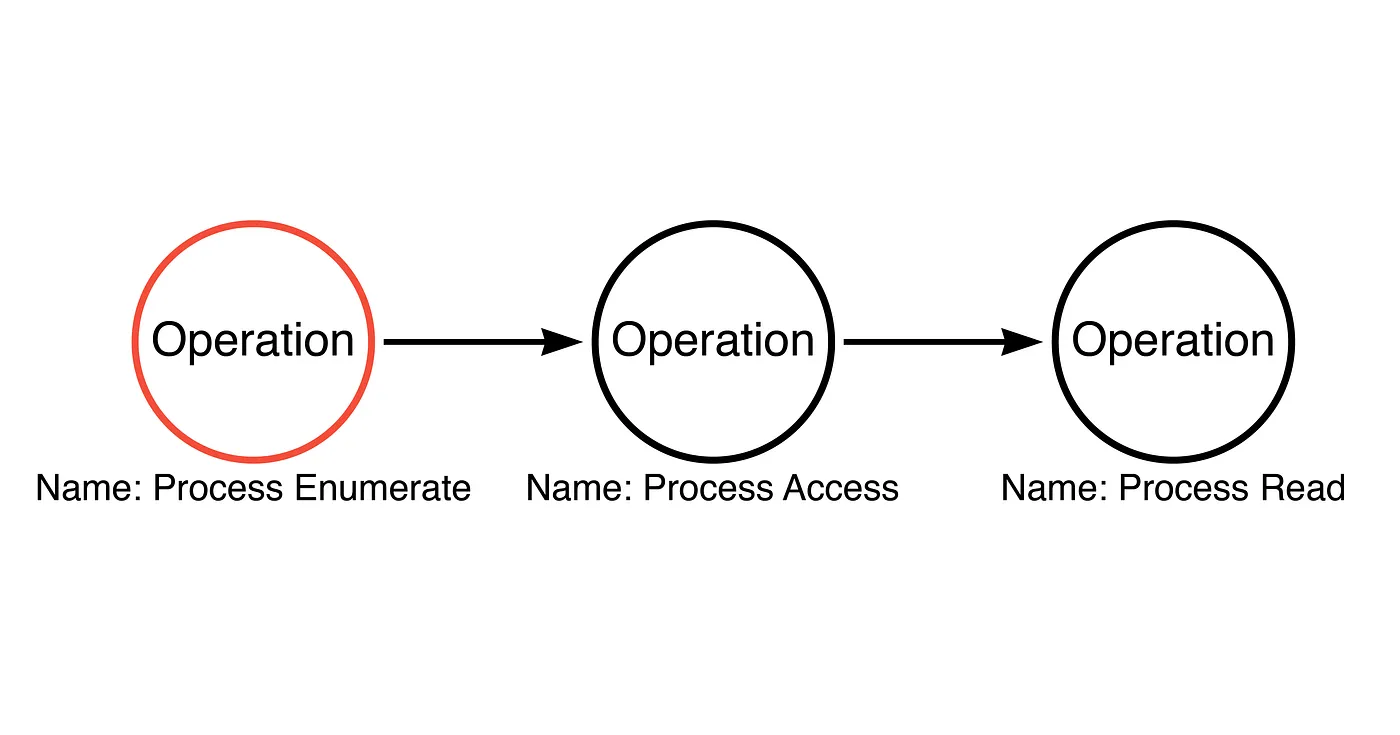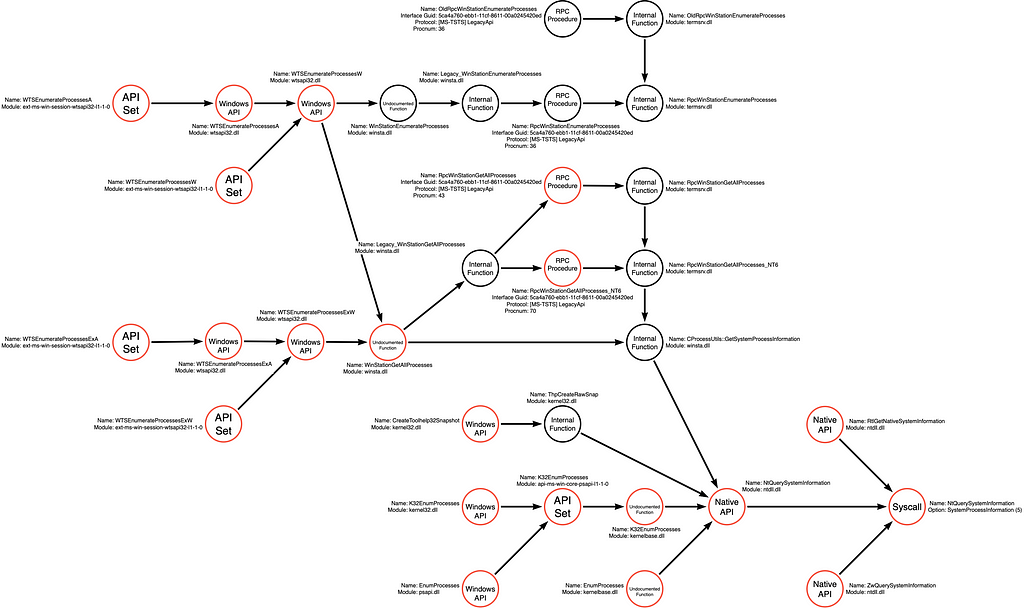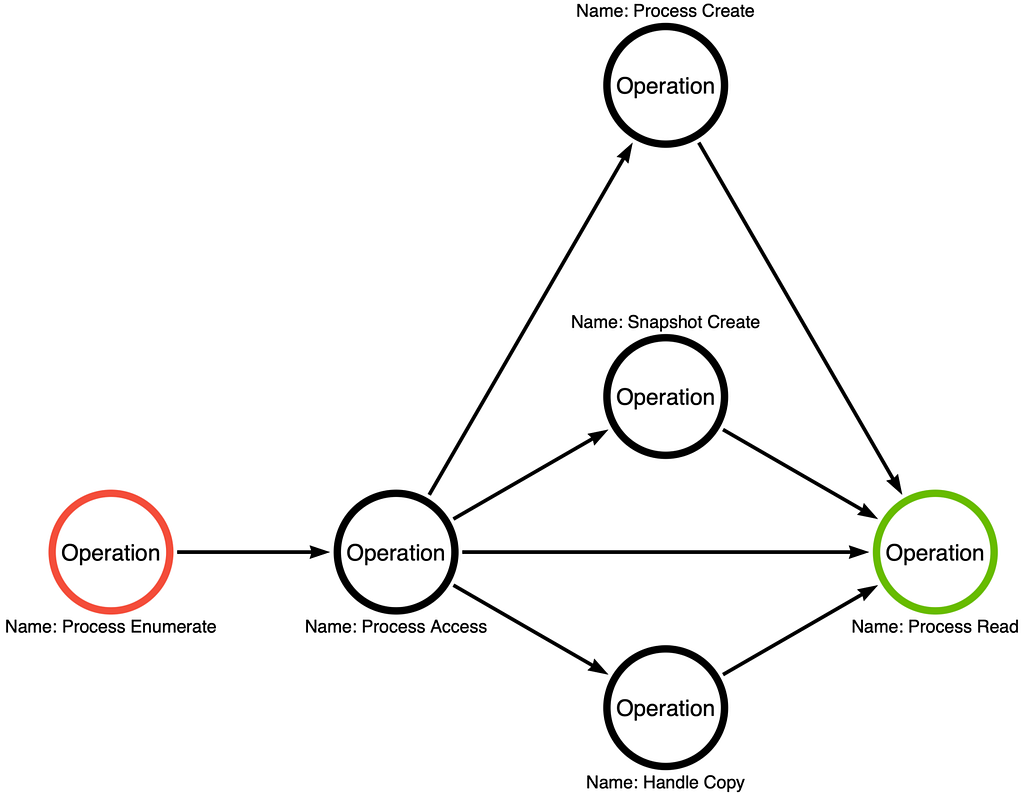Tactical to Functional
This note is based on an excellent blog series by Jared Atkinson and explores the ways we can and should go deeper than the Tactics, Techniques & Procedures.
Taxonomy
- Functions, both documented and undocumented, of the Win API and syscalls
- e.g.: ntdll.dll's NtQuerySystemInformation
- e.g.: kernel32.dll's OpenProcess
- e.g.: kernel32.dll's ReadProcessMemory
- e.g.: syscall NtOpenProcess
- Compound Functions are individual functions that perform multiple operations
- e.g.: kernel32.dll's Toolhelp32ReadProcessMemory which performs Process Access and Process Read
- Operations work as a container for teleologically equivalent functions
- Synonyms
- Functional Synonyms are tools which rely on the exact same function calls to achieve their outcome.
- Procedural Synonyms are tools which sequence the same operations in the same order as each other, but use differing functions or sequence them differently.
- Sub-Technical Synonyms are tools that differ at the procedural level, but still implement the same sub-technique.
Method
-
Understand the source code of the different implementations of the technique/sub-technique and enumerate the functions used. → Capability Abstraction

-
Understand that there are alternatives to these functions and that a single function can have multiple purposes (Compound Functions). So abstract the individual functions into what purpose(s) they serve, aka. Operations.

-
Consider that there are alternative Operation Paths (e.g.: instead of accessing a process, maybe we can clone it and access that), so enumerate these as well.
-
Now search for all possible, also the undocumented, functions that implement the operations in the different Operation Paths.

What Exactly Do We Define as a Procedure?
A procedure is "a sequence of operations that, when combined, implement a technique or sub-technique."
The procedures are the pattern of steps to execute, not the execution of the steps. E.g.:
- Enumerate processes to obtain the process identifier for lsass.exe.
- Open a handle to lsass.exe with the PROCESS_VM_READ access right.
- Read the memory of lsass.exe to obtain the credentials stored within.
The vital point here is not the steps; it is what the steps represent. Each step corresponds with an operation:
- Step 1 == Process Enumerate
- Step 2 == Process Access
- Step 3 == Process Read

The steps define a sequence of operations that implements a sub-technique, specifically, the sequence of operations that is instantiated by Mimikatz's sekurlsa::logonPasswords command.
[1] [2] [3] [4] [5] [6] [7] [8] [9] [10] [11] [12] [13] [14] [15]
Relevant Note(s): Capability Abstraction
https://posts.specterops.io/on-detection-tactical-to-functional-d71da6505720 ↩︎
https://posts.specterops.io/on-detection-tactical-to-functional-37ddcd75234b ↩︎
https://posts.specterops.io/on-detection-tactical-to-functional-45e41fef7af4 ↩︎
https://posts.specterops.io/on-detection-tactical-to-functional-5ff667af633b ↩︎
https://posts.specterops.io/on-detection-tactical-to-functional-fef1e09d3174 ↩︎
https://posts.specterops.io/on-detection-tactical-to-function-810c14798f63 ↩︎
https://posts.specterops.io/on-detection-tactical-to-functional-ceb3ad0e3809 ↩︎
https://posts.specterops.io/beyond-procedures-digging-into-the-function-call-stack-88c082aeb573 ↩︎
https://posts.specterops.io/on-detection-from-tactical-to-functional-1349e51e1a03 ↩︎
https://posts.specterops.io/on-detection-tactical-to-functional-f37c9b0b8874 ↩︎
https://posts.specterops.io/on-detection-tactical-to-functional-d214f64c580b ↩︎
https://posts.specterops.io/on-detection-tactical-to-functional-a3a0a5c4d566 ↩︎
https://posts.specterops.io/behavior-vs-execution-modality-3318e8e81739 ↩︎
https://posts.specterops.io/part-14-sub-operations-5e119cf610b1 ↩︎